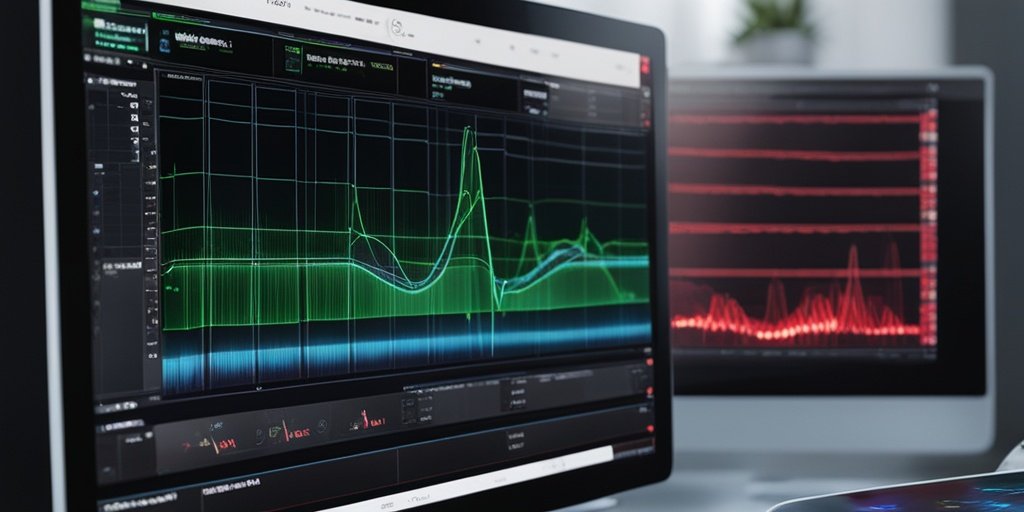⚡ Quick Summary
This study evaluated nine popular explanation methods for deep neural networks in the context of electrocardiogram (ECG) analysis, providing insights into their effectiveness through heatmap visualizations. The findings suggest that no single method consistently outperformed others, highlighting the need for a collaborative approach between data scientists and medical experts.
🔍 Key Details
- 📊 Dataset: ECG data from a residual deep neural network
- 🧩 Explanation methods evaluated: Saliency, Deconvolution, Guided backpropagation, Gradient SHAP, SmoothGrad, Input × gradient, DeepLIFT, Integrated gradients, GradCAM
- ⚙️ Evaluation methods: Qualitative assessment by medical experts and objective evaluation using a perturbation-based method
🔑 Key Takeaways
- 🔍 No single explanation method consistently outperformed others in ECG analysis.
- 🤔 Expert evaluations showed considerable disagreement with objective evaluations.
- 📈 Method effectiveness varied depending on the specific ECG measure being analyzed.
- 🤝 Collaboration between data scientists and medical experts is crucial for developing useful explanation methods.
- 🔄 Multiple methods should be applied to determine the most suitable approach for different use cases.

📚 Background
The integration of deep learning in medical diagnostics, particularly in analyzing electrocardiograms (ECGs), has shown great promise. However, understanding how these models arrive at their predictions is essential for their acceptance in clinical settings. Explanation methods, such as heatmaps, can provide insights into model behavior, but their effectiveness can vary significantly.
🗒️ Study
This study aimed to evaluate the effectiveness of various explanation methods for deep neural networks trained on ECG data. A residual deep neural network was developed to predict intervals and amplitudes from ECGs, and nine commonly used explanation methods were assessed both qualitatively by medical experts and quantitatively through a perturbation-based approach.
📈 Results
The analysis revealed that while no single explanation method consistently outperformed the others, some methods were found to be clearly inferior. The study also highlighted a significant disagreement between the evaluations of human experts and the objective assessments, indicating the complexity of interpreting model predictions in a medical context.
🌍 Impact and Implications
The findings of this study underscore the importance of selecting appropriate explanation methods for deep learning models in healthcare. As the field of medical AI continues to evolve, ensuring that these models are interpretable and trustworthy is vital for their integration into clinical practice. This research advocates for a collaborative approach, where data scientists work closely with medical professionals to enhance the utility of explanation methods.
🔮 Conclusion
In conclusion, this study emphasizes the need for a multifaceted approach to evaluating explanation methods for deep neural networks in ECG analysis. By recognizing that no single method is universally superior, researchers and practitioners can better tailor their approaches to specific clinical scenarios, ultimately improving the interpretability and reliability of AI in healthcare.
💬 Your comments
What are your thoughts on the importance of explanation methods in medical AI? We would love to hear your insights! 💬 Join the conversation in the comments below or connect with us on social media:
Evaluating gradient-based explanation methods for neural network ECG analysis using heatmaps.
Abstract
OBJECTIVE: Evaluate popular explanation methods using heatmap visualizations to explain the predictions of deep neural networks for electrocardiogram (ECG) analysis and provide recommendations for selection of explanations methods.
MATERIALS AND METHODS: A residual deep neural network was trained on ECGs to predict intervals and amplitudes. Nine commonly used explanation methods (Saliency, Deconvolution, Guided backpropagation, Gradient SHAP, SmoothGrad, Input × gradient, DeepLIFT, Integrated gradients, GradCAM) were qualitatively evaluated by medical experts and objectively evaluated using a perturbation-based method.
RESULTS: No single explanation method consistently outperformed the other methods, but some methods were clearly inferior. We found considerable disagreement between the human expert evaluation and the objective evaluation by perturbation.
DISCUSSION: The best explanation method depended on the ECG measure. To ensure that future explanations of deep neural networks for medical data analyses are useful to medical experts, data scientists developing new explanation methods should collaborate tightly with domain experts. Because there is no explanation method that performs best in all use cases, several methods should be applied.
CONCLUSION: Several explanation methods should be used to determine the most suitable approach.
Author: [‘Storås AM’, ‘Mæland S’, ‘Isaksen JL’, ‘Hicks SA’, ‘Thambawita V’, ‘Graff C’, ‘Hammer HL’, ‘Halvorsen P’, ‘Riegler MA’, ‘Kanters JK’]
Journal: J Am Med Inform Assoc
Citation: Storås AM, et al. Evaluating gradient-based explanation methods for neural network ECG analysis using heatmaps. Evaluating gradient-based explanation methods for neural network ECG analysis using heatmaps. 2024; (unknown volume):(unknown pages). doi: 10.1093/jamia/ocae280